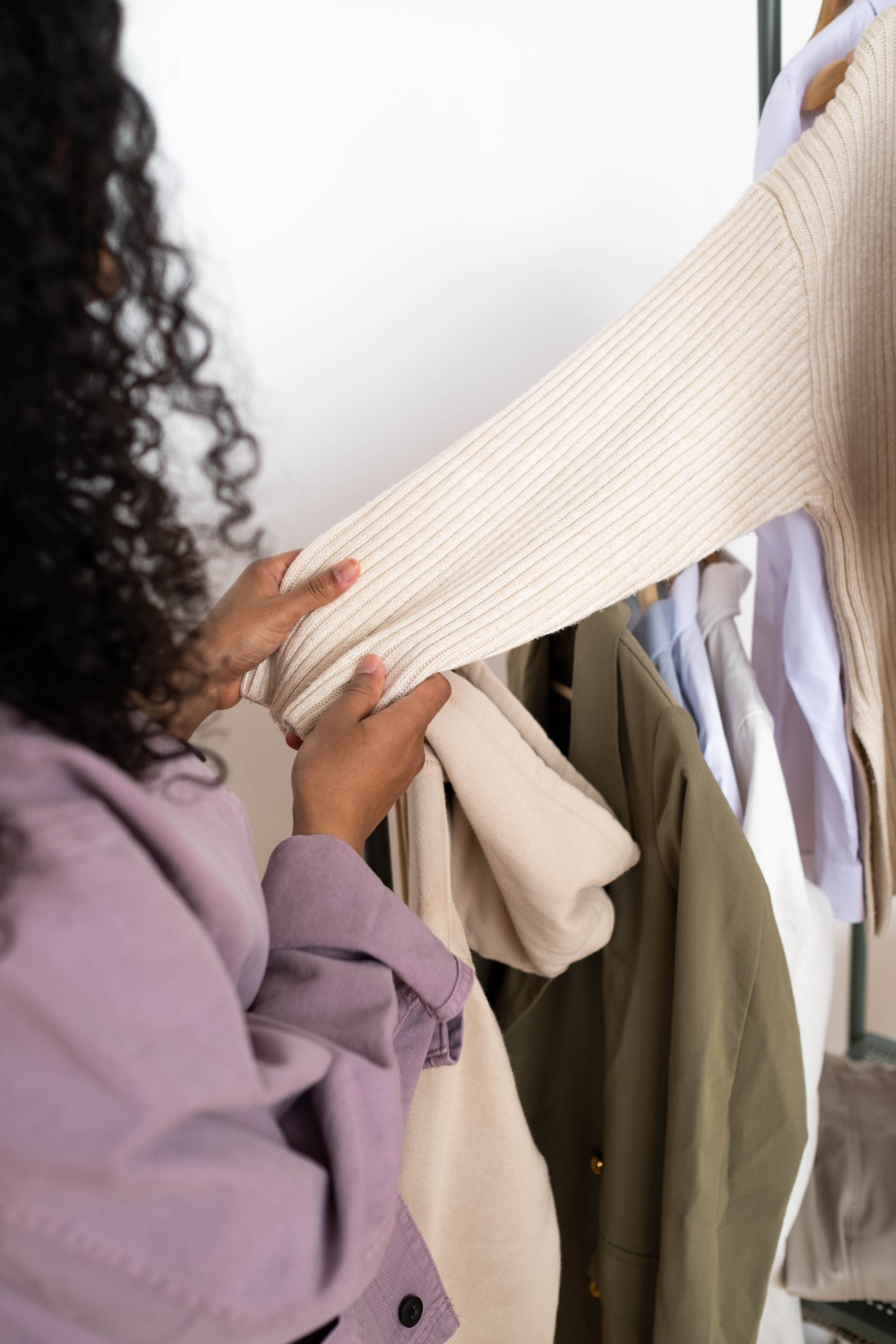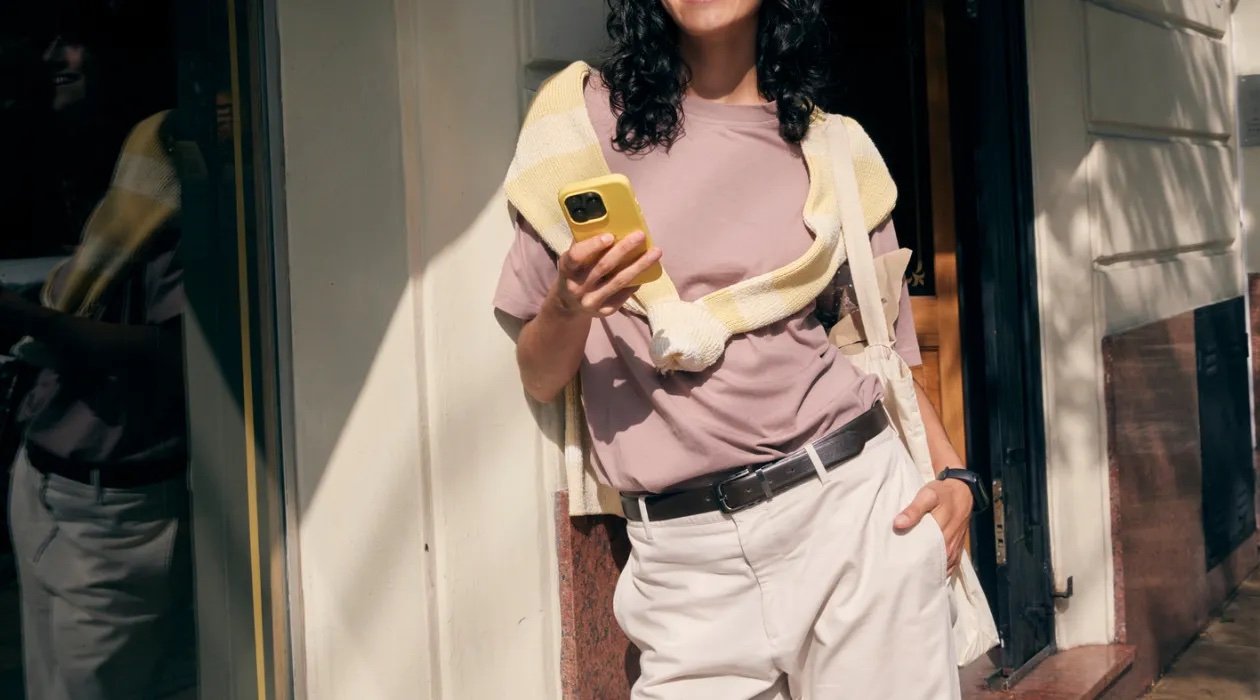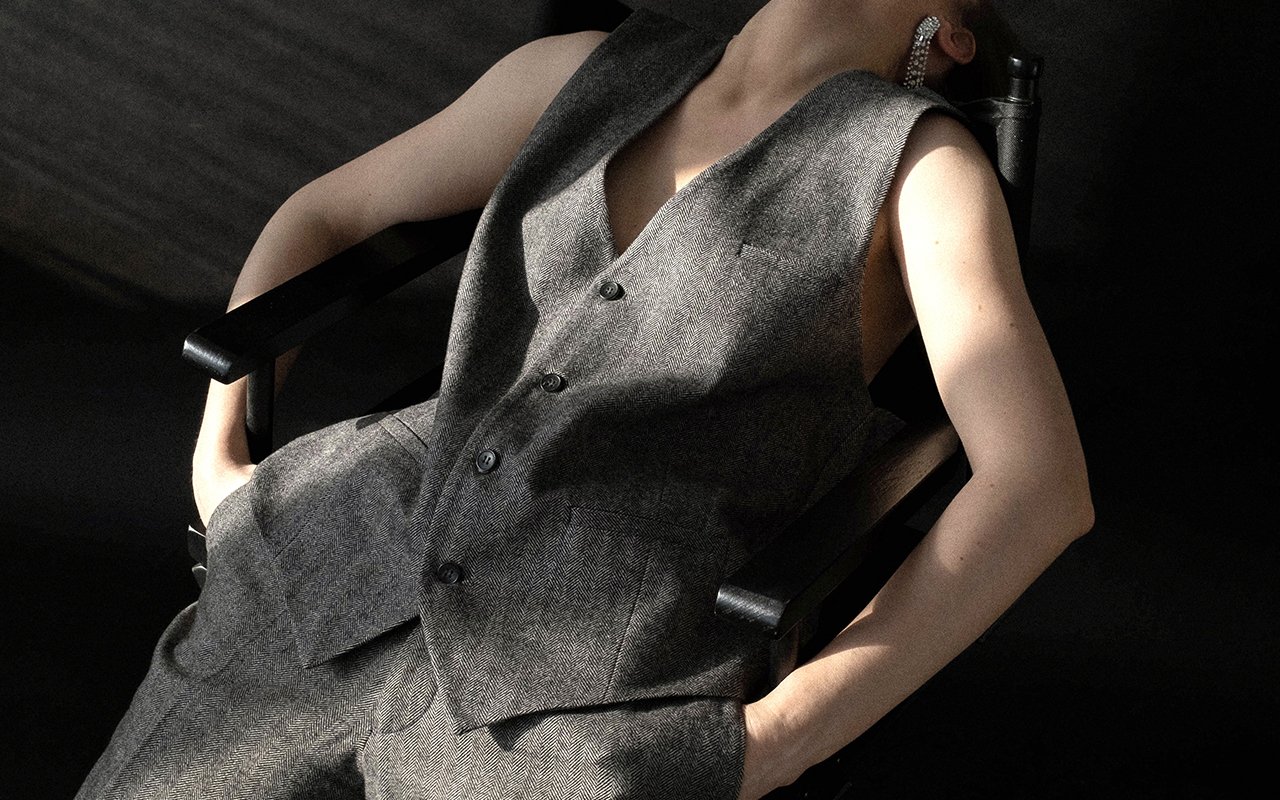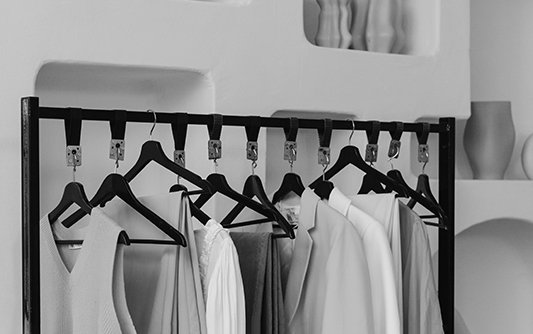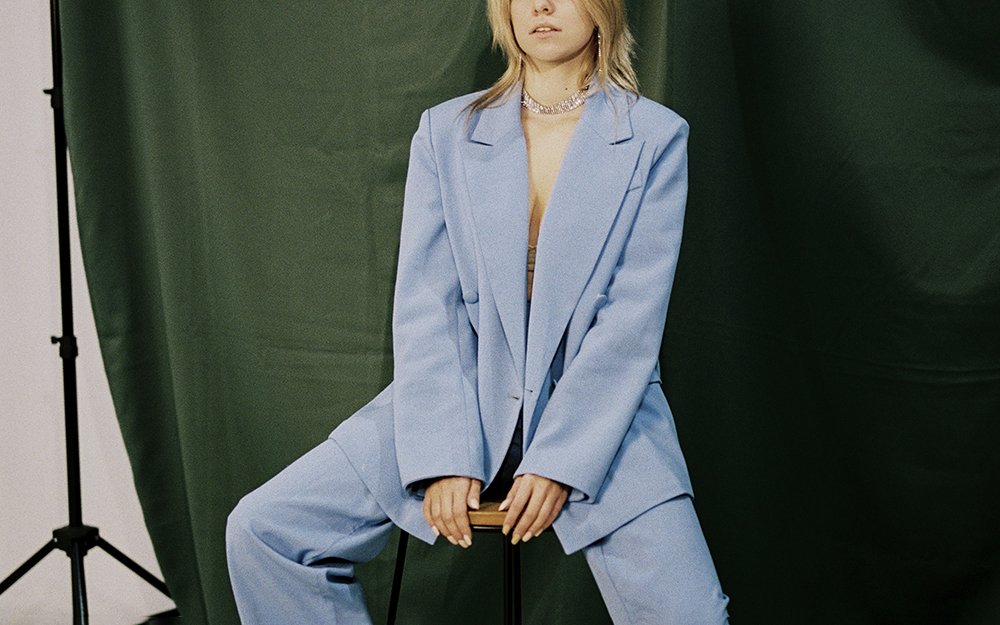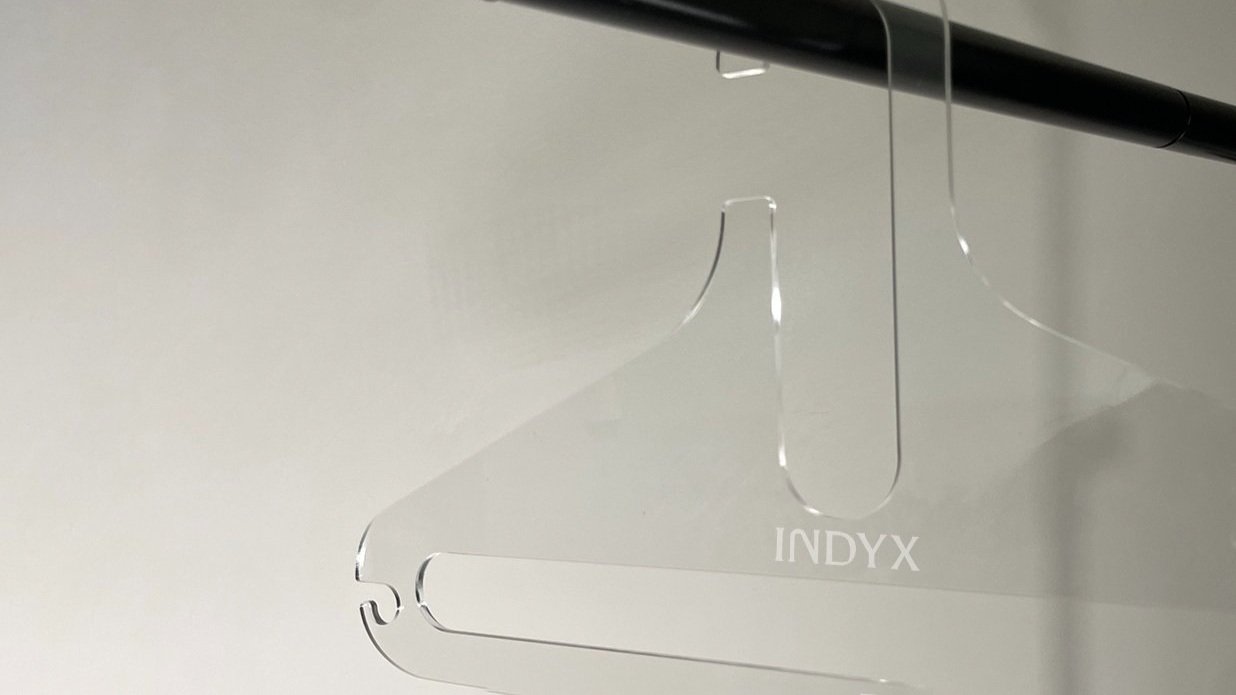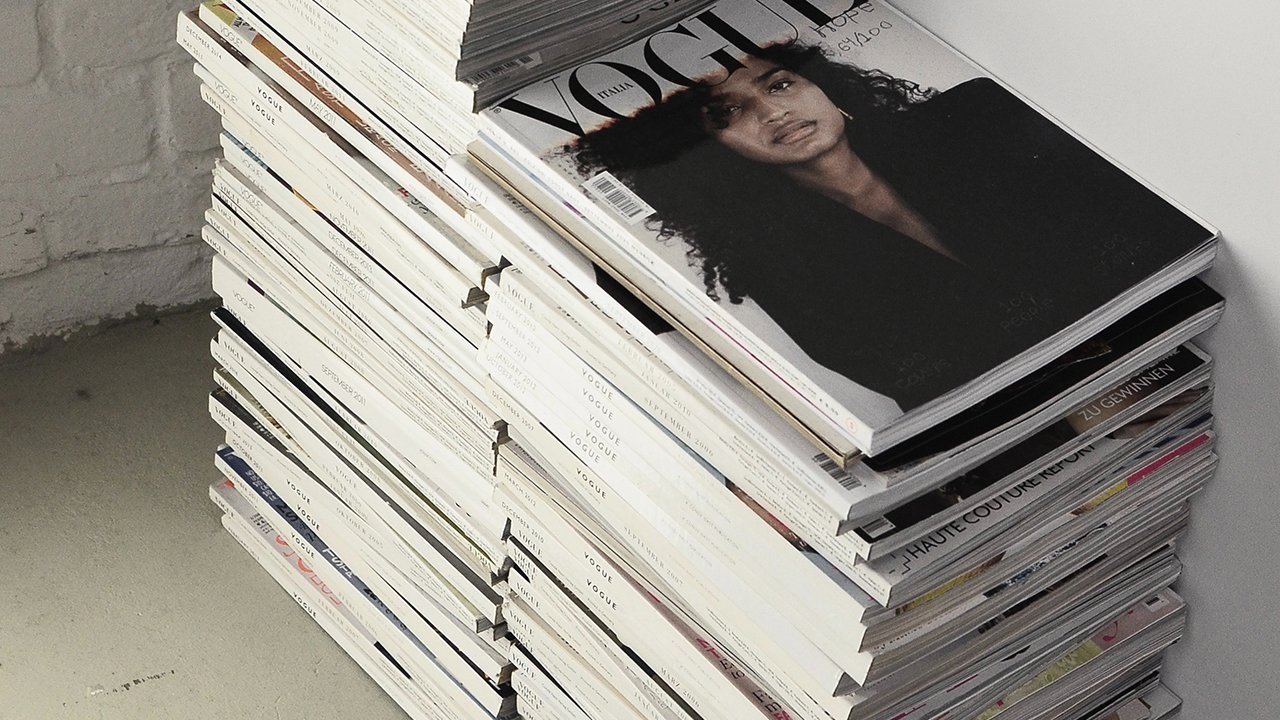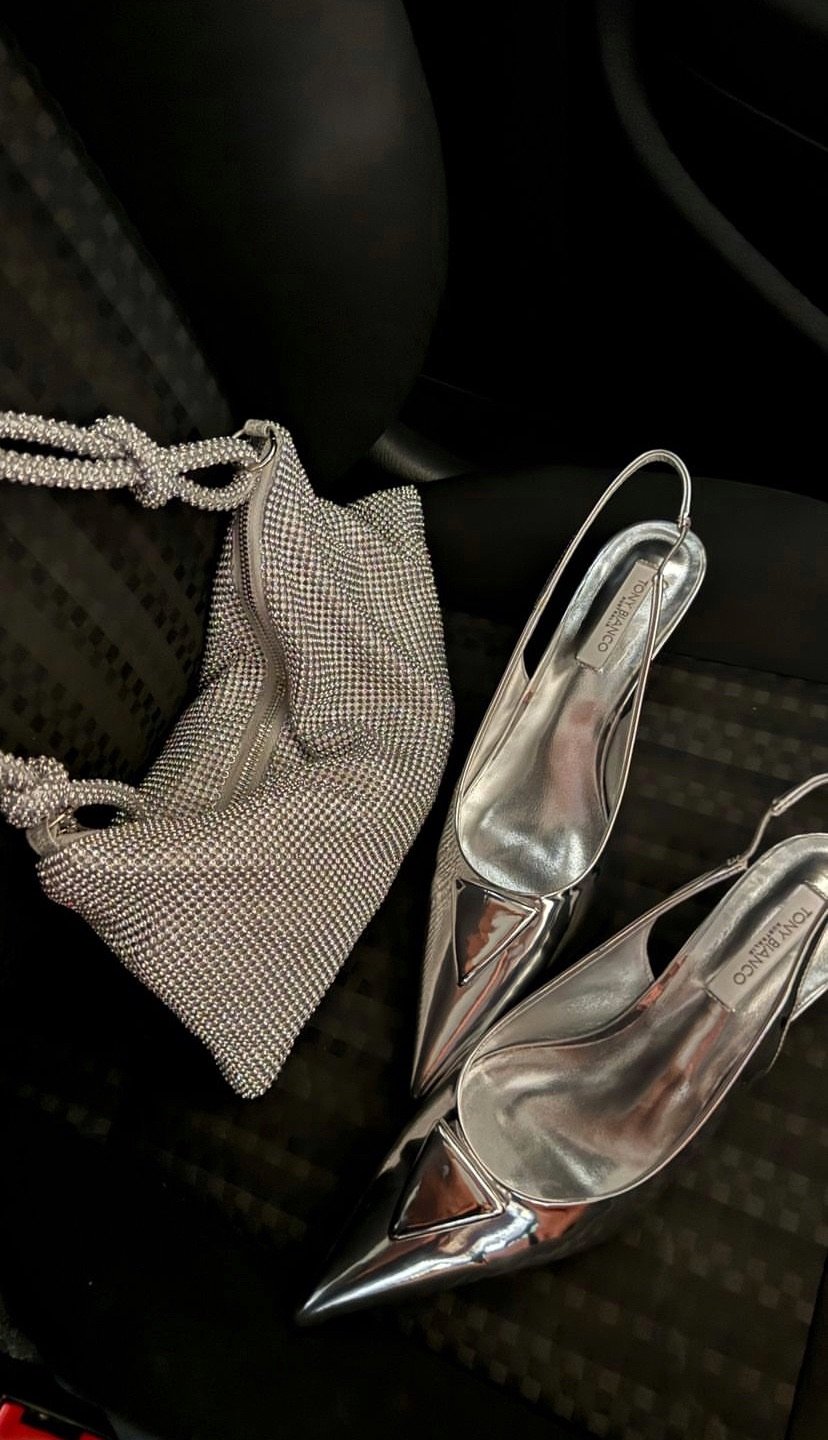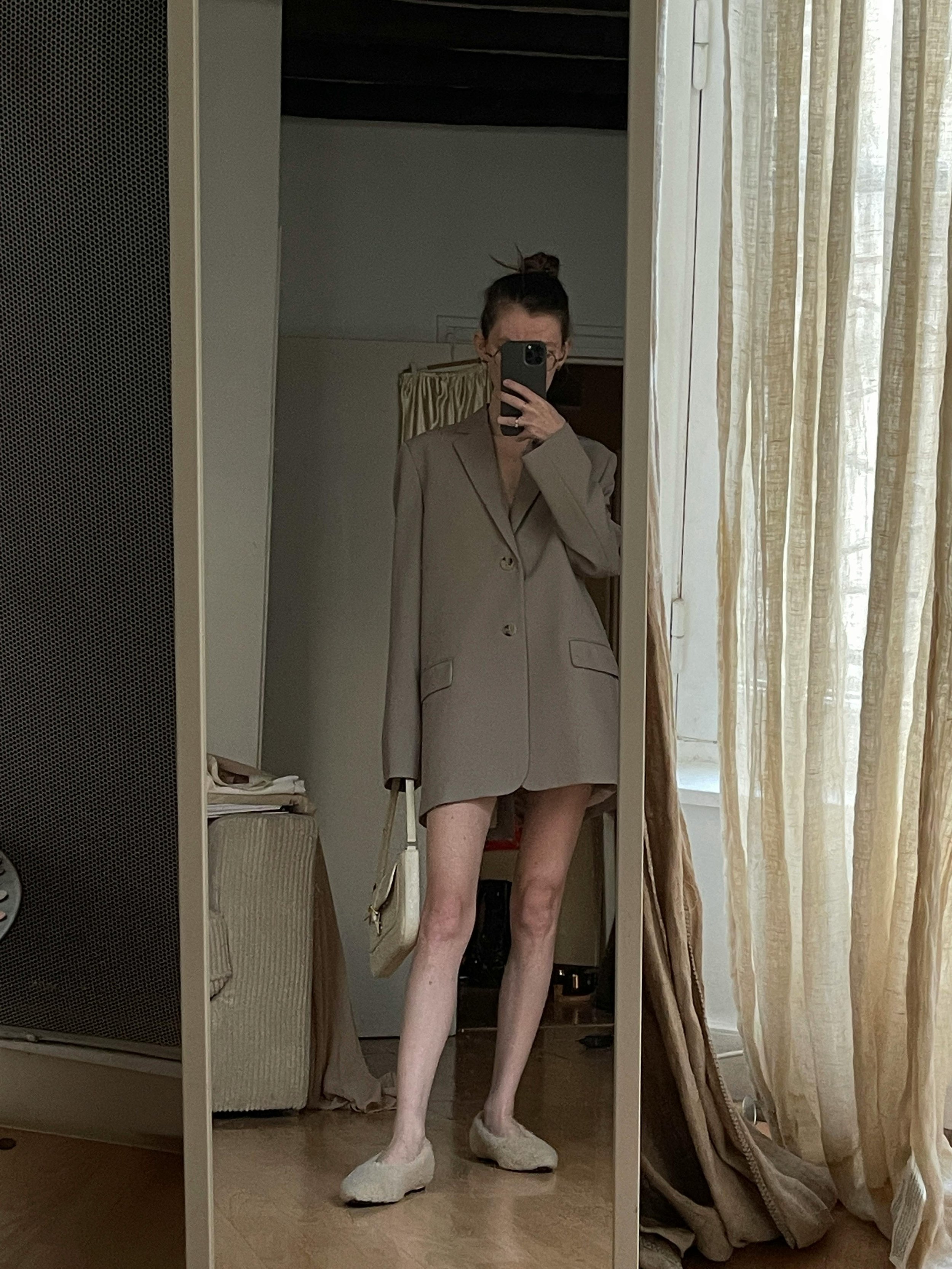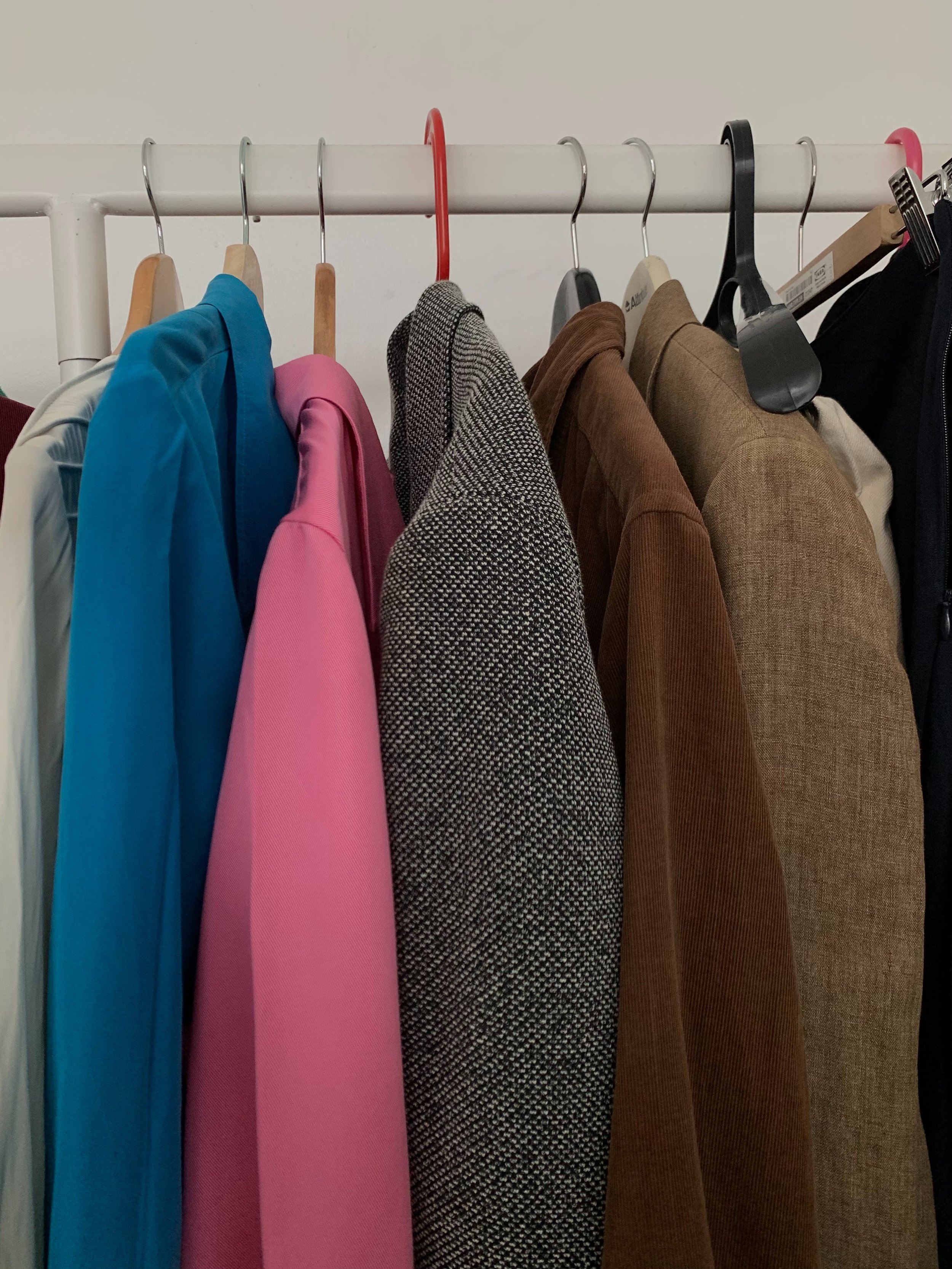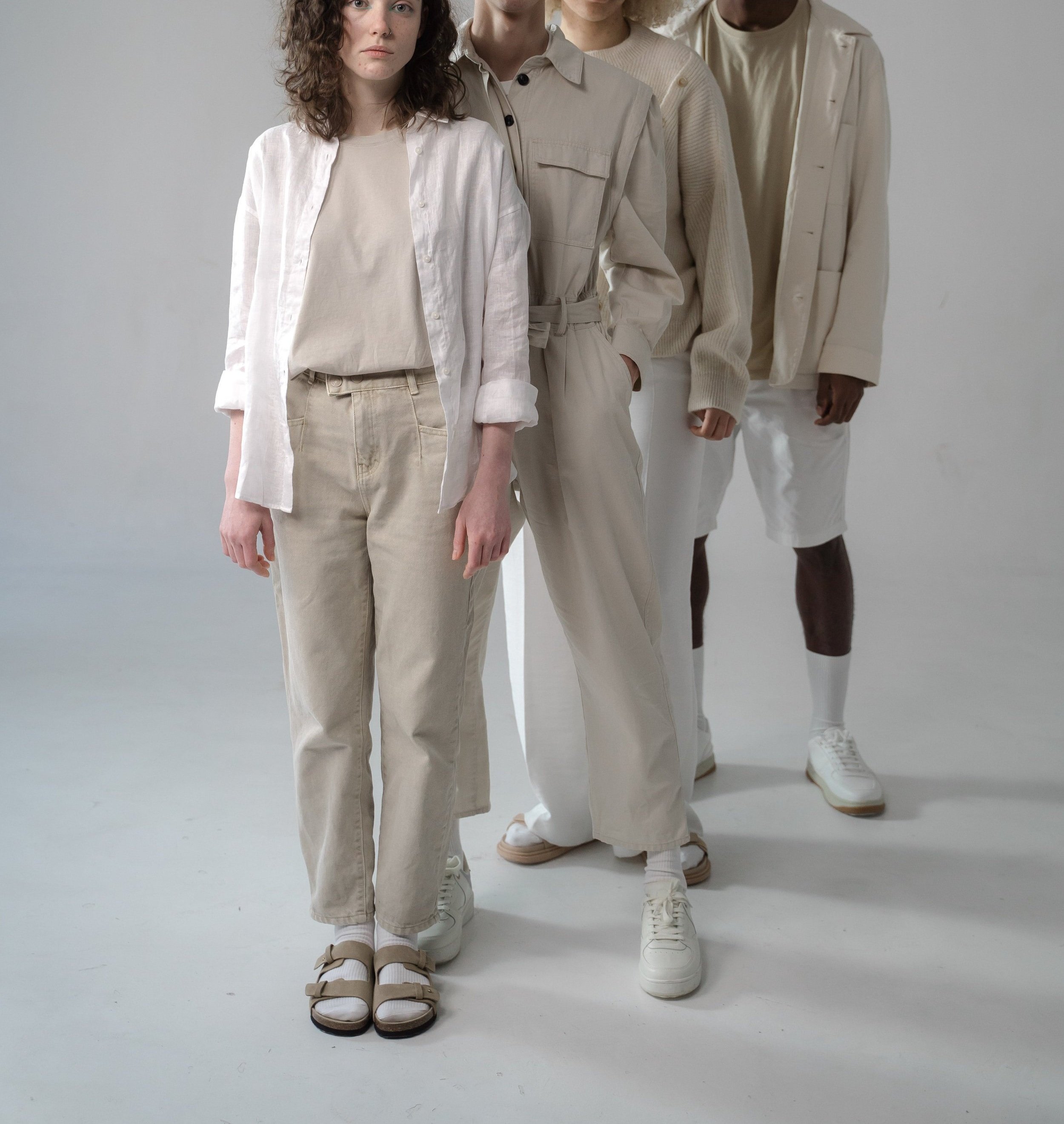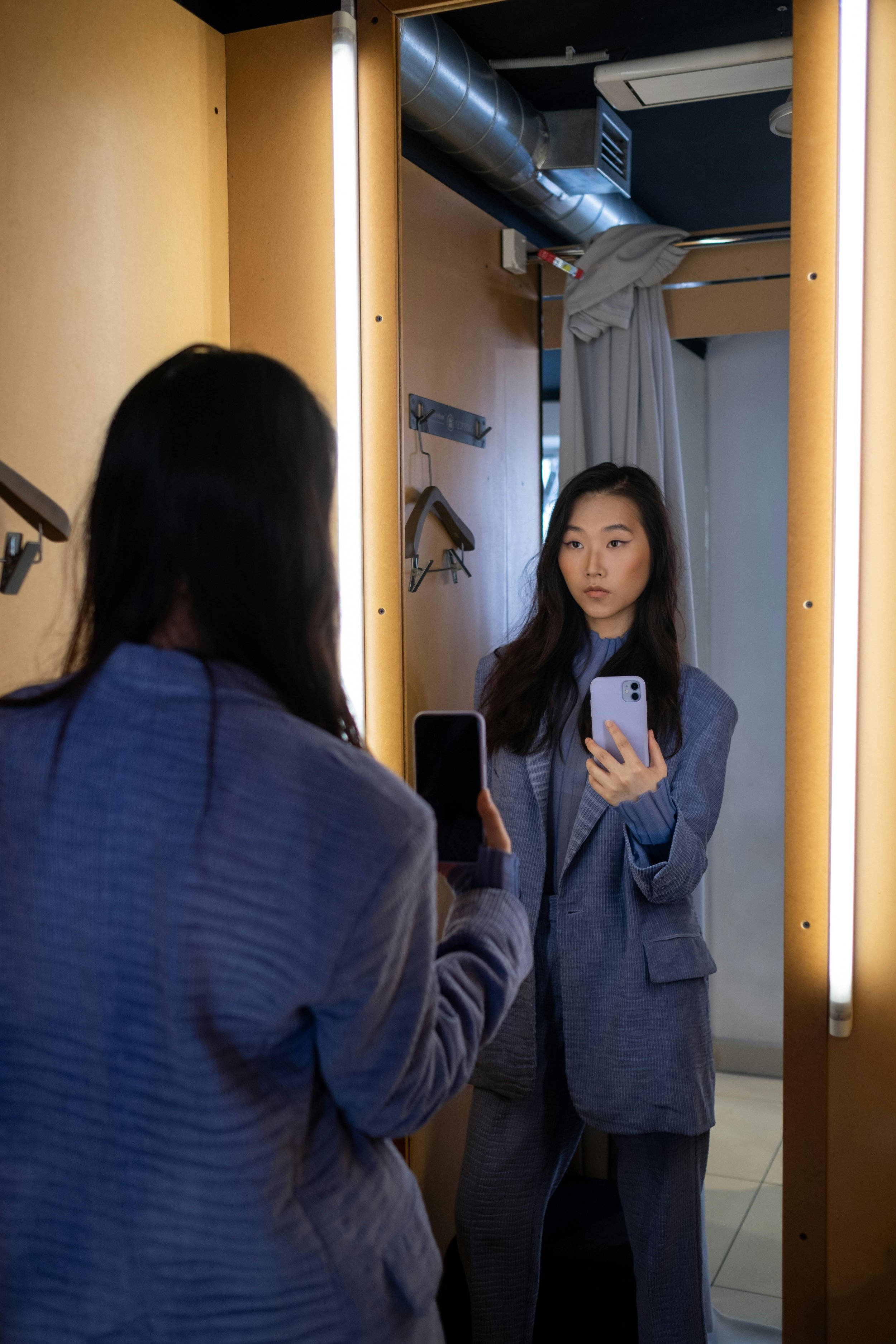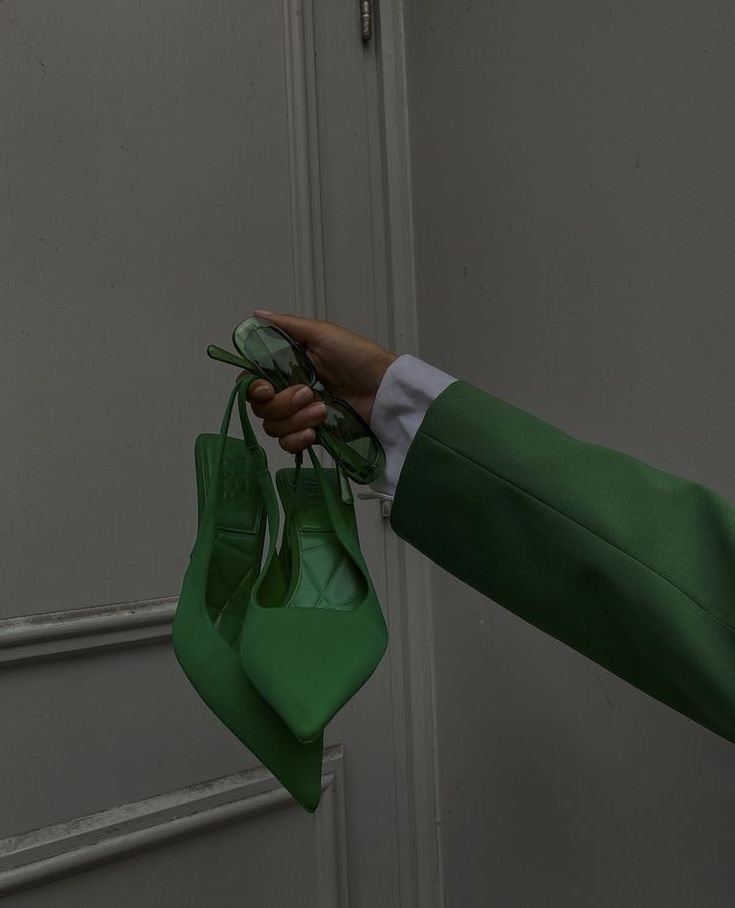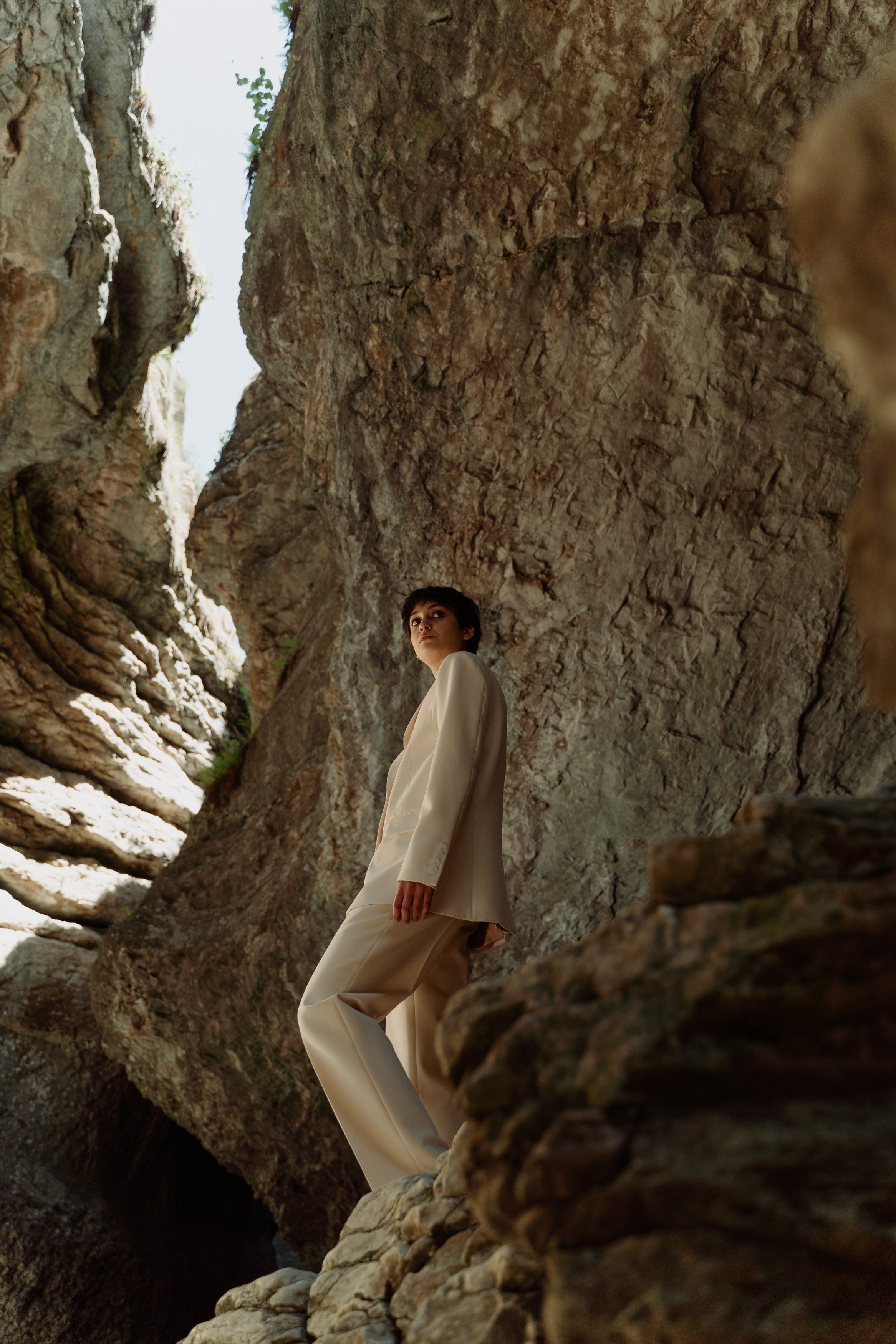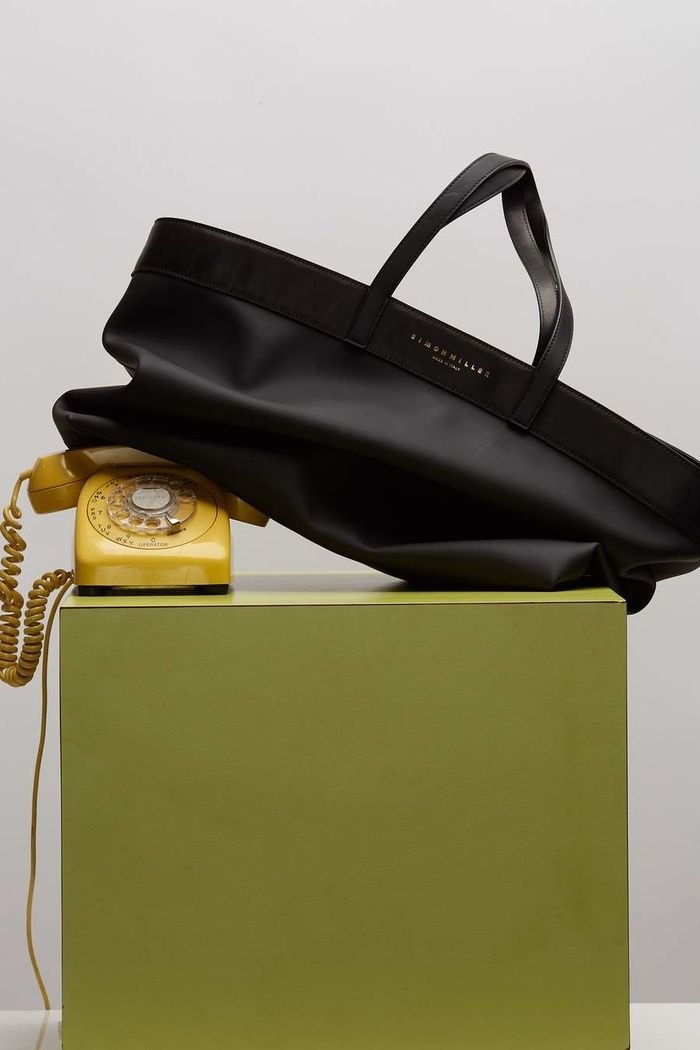Style Workshop Week 9: Source Your Wishlist
We’re on the last stretch to the finish line, the last frontier, the final week of our Style Workshop!
Well, not exactly.
Over time, you will want and even need to revisit some lessons as your style evolves. However, you will come back to it with a strong sense of your personal style and a solid foundation for your wardrobe.
In this last week of the course, we will unleash the Rachel Green personal shopper within us all, and learn to source the items on your wishlist. This won’t be a week-long buying spree, but rather a week to set you up to build your wardrobe over the coming months and even years so you don’t end up right back where you started.
Why did we not source each item while assembling our list?
To put it simply, we wanted to keep you in the driver’s seat with your options open. Keeping a wishlist means that you’ve fully thought through the idea of the item before finding any exact one, giving you better perspective to go shopping to simply select the option that is best for you. It lessens the likelihood that you’re only wanting something due to the influence of marketing, rather than the impact on your wardrobe. Talk about de-influencing, I guess we were once again ahead of the TikTok trends!
Whether you’re a fashion brand savant or buy all your clothes from the same two stores, we will guide you through finding the perfect item for each of your wishlist wants.
And, if you struggle to source any item on your list or need help prioritizing, this week you can meet with an Indyx stylist for your 1:1 session for some advice and to conclude our 8-week course.
The Lesson
We all have that one friend who is always wearing the coolest clothes. And when you ask her where she got it, she is just as likely to tell you a high street brand like Zara or that she found it at an underground vintage store. She doesn’t necessarily love shopping because she loves buying clothes - the best shoppers are in love with the thrill of the hunt. That is what sourcing is all about.
To reiterate, it is very important to view your wishlist as separate from specific items from specific brands. Creating a wishlist free of influence teaches you to identify what you really need and find the patterns in your personal style. Additionally, it keeps you open to finding what you’re looking for in sometimes unexpected places.
And to be clear: your wishlist is not a to-do list and it’s not about crossing all the items off. It’s a place to let things marinate, and if you don’t feel an urgency to add a certain piece to your closet, it is totally fine to let it sit on your wishlist indefinitely. You may find that after a few months, it ends up falling off! That is a reassurance that your wishlist is working correctly, giving you time to really assess how much you need each item rather than impulse buying. It’s like getting a tattoo: it’s best to sit with the idea for some time before making a commitment. And really, we should see it more as a tattoo-like life commitment - maybe not for us, but certainly for the planet.
Movies and TV always portray shopping as a fun filled weekend activity, but for many people it can be stressful. The most important thing when going shopping is to feel your best. If you don’t feel like shopping or have a lot on your mind, you won’t like anything you try on so don’t waste your time.
Of course, there are some days where no matter how good of a mood you’re in, you just don’t find anything you like. While that may feel frustrating, it’s actually a lot better than feeling like you’ve fallen in love with something only to change your mind later. Take it as validation that your taste has become more refined. You know what you like, and consequently there’s a lot you don’t!
For our online shopping queens: make sure returning is convenient, or that you mentally budget for the time this might take. You can’t see quality or fit through an online image, and it is so easy to just keep something because it is already in your house. It’s a bit of a conundrum that while sourcing is fastest and easiest to do online, buying is best done in person.
The Homework
This week’s homework isn’t necessarily shopping, but you can of course find something on your wishlist and buy it this week. The goal is to add a few new techniques to your toolkit so that you can - over time - find your ideal item for each want on your wishlist.
For this week’s homework, we will be selecting 1-3 wishlist items that you are ready to source. How do you decide which items? Think about prioritizing:
Seasonal need. If it’s the dead of winter, then buying a new scarf would be higher up on your list than, say, flip flops, even if you currently don’t have any. It’s always best if you can wear the item within a week of buying it, for that last little bit of validation that it’s fit.
Lifestyle needs. Think about work, hobbies, responsibilities, etc… Answer yourself this: what do you feel a lack of on a daily basis?
Wardrobe utility. Which item on your list would unlock the most outfits? The best way to find this out is to head over to the Indyx app and style a few outfits.
Je ne sais quoi. Which item is calling you the most? Which would you be most excited and proud to own?
Once you have at least one item at the top of your list, it’s time to start sourcing.
1. Set your budget
Before we look for clothes, it’s good to decide the maximum you want to spend on that item. For those of us who have ever been wedding dress shopping, the purpose of this should be obvious: nobody wants to fall in love with a dress or pair of boots that you’d have to forego paying your rent or mortgage for two months to pay off.
You can always choose to spend less than that number, but what is the *most* you’d want to spend?
2. Look at your favorite retailers
It’s helpful in the base case to have a list of brands on hand that you love and that fit your style. If you don’t already have one, start developing this list.
If you’re struggling to think of brands, this is one instance where we suggest taking a peek at influencers you like as they can clue you into the brands they regularly wear. You can also use your Pinterest inspiration board as a starting point. Simply click on the image and Pinterest visual search may be able to directly link to the item as well as other images with similar items.
You can also look at major department stores and online retailers that offer many different brands as a source of discovery.
Browse these favorite brands & retailers, searching specifically for the item you’re looking for - say, a “white button up shirt” - and come up with a favorite option or two.
This may sound counterintuitive, but at this point we think it’s okay to look at options that are above your stated budget. Remember: right now, we’re looking the price if you bought it full-price *new* directly from the brand. Keep reading, and we’ll find ways around this!
3. Upload to Indyx to test them out
Once you’ve decided on an item or are weighing a couple different options, upload the online flatlay images to your wishlist on Indyx. Try completing outfits you have started styling or create new ones from scratch around your new item. We recommend styling at least three different outfits with that new item. If it’s the one for you, doing this should feel invigorating rather than a chore!
4. Source secondhand options
We think it’s always worthwhile to at least take a look at what is available secondhand online. Now that you have one or more specific items in mind, you can easily search for them on secondhand sites like eBay, Depop, Poshmark, The Real Real, etc. You’d be surprised at how often that exact item pops up on at least one site - and for much less than it would cost to buy new. There are also browser plug-ins like Beni available that help you do this automatically everytime you shop!
You can - at this point - choose to selectively open your aperture a bit as well. If you’ve become an online secondhand pro, you can back out to searching for the general item (“white button up shirt”) to see what pops up. It is often helpful to also add brand terms to these searches (“toteme white button up shirt”). This tactic allows you to discover secondhand items from brands you love from past seasons that they may not offer anymore.
It is always a good idea to set up some saved searches on secondhand sites for items you’re looking for. This is another nice way to scratch the ‘online shopping’ itch - instead of aimlessly browsing online, go check your secondhand saved searches to see if any gems have popped up!
5. Decide: Now or Later?
At this point, you probably have a few options in front of you - both new and secondhand - that fulfill your wishlist item. Pause and ask: do I like one of these options enough for the price to go ahead and buy it right now? If you aren’t feeling that urgent pull, it is again okay to let it marinate!
But don’t let all your hard work go to waste! We love using a separate Pinterest board to save links to these items so it’s easy to periodically revisit it. It might just go on sale! The Indyx team has scored many of their best deals this way.
On the flip side, if you find it difficult to give yourself permission to buy things or find yourself over-analyzing - believe it or not, some people are this way! - then it can be helpful to set a target “pace” for yourself. Say, 1 item per month or $x per month, and if you haven’t hit that bar yet, go ahead and go for it! You have clearly thought it through.
6. Other IRL options
Pausing to wait also gives you the opportunity for IRL serendipity. You may just come across a *perfect* and even cooler vintage version of the same item out shopping in the real world. You may end up sticking to what you previously found online, but you could find that one-of-a-kind item that has people doing double takes on the street. If you’re excited to put some time into this, other sources we’d recommend checking out are:
Vintage Stores:
Vintage stores offer a curated range of quality clothing that is usually at least twenty years old, so you might find items from the 90s or 70s. They will often sell designer pieces but if that is what you are exclusively looking for, then it is best to go to a designer vintage store. Prices at normal vintage stores are higher than your usual secondhand or thift shop, but you will find good quality pieces that have been pre-curated for you.
To locate vintage stores around you, it’s as easy as googling “Vintage stores [your city]”. But be warned that some thrift stores mislead clients into thinking they are selling vintage pieces. The best tell tale sign is the size of the store. Vintage stores have a highly curated selection of items because they need to be vetted for quality and authenticity.
Thrift Stores:
Thrift stores, on the other hand, are also secondhand stores but they don’t usually have the same standards of quality and consequently are much cheaper. You can find some hidden gems - and even some designer pieces - but thrifting does involve digging.
Many shoppers who want to delve into second hand shopping can start to feel unmotivated after going thrifting because there are so many options and the stores can be a little chaotic. To start out thrifting, try smaller stores and have only a few specific items in mind instead of just aimlessly browsing. Focusing for example, on denim, will help you work through one contained area of the store and start to get the hang of how thrifting works.
Estate Sales:
An estate sale happens when someone either passes away or for any reason wants to liquidate the assets in their home. They will either sell or put up for auction all of their items, which means you’ll find a lot more than just clothes. These sales are usually posted on estate sales websites and you can just look up estate sales near you by inserting your zip code or city.
The downside of estate sale shopping is that all the items are from one specific person - so, if that person didn’t share your size or style you are a bit out of luck. Online postings usually include a description of the kinds of items for sale and a few images, so make sure to check those out before going.
But, the '“all from one person” nature is also the benefit of estate sales! If you do find your stylemate from another generation, it can be an absolute treasure trove of incredible vintage finds.
Independent Boutiques:
Lastly, before buying it online, take a shopping trip. With a clearer idea of the item you want, it doesn't hurt to take a look at what ‘ye ole’ brick and mortar stores have to offer.
Once you’ve found *the one*, we recommend a few last questions before you make that final decision:
Is it good quality?
This looks different for different materials. Are the knits tightly woven? Is the leather sturdy? Is the coat lined? We have a full guide on how to identify quality clothes here.
Learn about the markers of high-quality clothing, regardless of brand or price point
Does it fit you perfectly?
Everyone has a different preferred fit, so saying the seam of the jacket needs to be on the edge of your shoulder isn’t relevant if you like things oversized. But do make sure you feel physically and emotionally comfortable. Walk a bit around, sit down, and have a little dressing room dance party.
If it doesn’t quite fit you perfectly yet, but you have confidence that it could be tailored to fit - and you’re willing to do so - then that is also fine. If this is your plan, it is generally much better to buy a size up and tailor down than buy too small and ask your seamstress to dig extra fabric that may not exist out of the seams.
One last note: while considerable progress has been made in the last decade or so to promote a more inclusive fashion industry, we’re still far from ideal representation. We say this because you may notice the majority of the models on your inspiration board have a very specific look. As you actually try on clothes from your wishlist, you may not look exactly like them.
But just because the clothes don't appear on you exactly like the models in the pictures, it does not mean the item doesn’t fit you. There is no ideal body or ideal woman for any style. But, you *do* have to decide if you are comfortable accepting the difference in how the item looks on the model versus how it looks on you. A small word of advice on this: try seeking out influencers who match your body size & shape! It is incredibly helpful for acceptance to just be exposed more often to clothes in bodies that look more like yours.
Is it your style?
Check against your three words. If it doesn’t pass the test, then style it in your digital wardrobe to see if it helps other outfits you’ve created pass the test. Ideally, if you’re sourcing from your wishlist, this is something you’ve already done - but this is last call!
Do you already own it?
Open the Indyx app and look through your wardrobe for any similar pieces. Again, if you’re buying from your wishlist, you probably have nothing to worry about here.
Would I be proud to own it?
This last question speaks to the je ne sais quoi of an item. Is it lighting you up? Would it give you joy to scroll past it in your digital wardrobe? If your friend asked about it, would you be proud to tell them about it?
It is possible to go through all these steps and still not have that item really speak to you - and that’s okay! But if your goal is to love every single thing that you own, then listen to that impulse and let it go.
If you’re not 100% on any of these questions, don’t buy it - or, if it’s already in your hands at home, it’s time to return it. It’s that simple.
This process may sound overwrought to you at first. But remember: the point is to slow down consumption and add items to your wardrobe with much more intention. If you’ve shopped differently for years - and still found yourself here - then it might be time to at least give it a try.
Wrapping It Up
And with that: you have now officially graduated from Indyx’s Style Workshop! Congratulations! We would like to remind you to look back on the intentions you set eight weeks ago. You’ll be surprised by how far you’ve come and proud of actually sticking to this process. Welcome to the “9% Club”.
We always welcome you to revisit any of these lessons when you need a refresh. For now, we hope you enjoy your new clarity on your personal style and a decluttered wardrobe, both digital and physical.
But, while I’ve got you…
If I’ve got you here reading till the bitter end, I hope that means the Style Workshop has been valuable to you. We make this content free because we want as many people as possible to benefit from it.
That said, this little company we’re building comes with its own costs.
So, if the Style Workshop resonated with you and you’re wondering how you can support us, becoming an Indyx Insider is the absolute best way to help. For just $60 a year (that’s $5 a month!), you’ll unlock super cool features and perks like access to our members-only Slack channel and 10% off as many styled Lookbooks as your heart desires.
We’d love to have you join the crew and hope to see you on the inside. 💛
Found yourself here without being signed up for the Style Workshop?
Obviously, we’re giving away this awesome content for free.
But, sign up for this experience in our app and you’ll get this 9-week course conveniently emailed to you at our recommended cadence to help keep you accountable.


